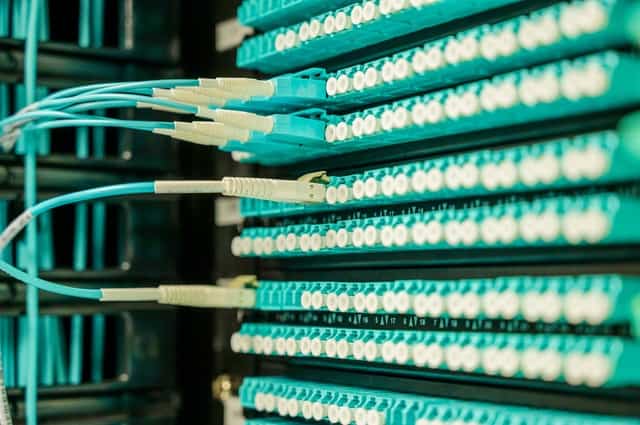In this digital world, we use so much information and it is increasing day by day. Documents, pictures, videos, images are very common and we need stores to keep them. That’s why we all use data stores on our pc or laptop. Even mobile operators use different data storage. Keeping more data needs more storage and maintenance of this storage is complex work.
RAID is the most popular and basic solution to store large data. Here anyone can increase storage by combining two or more storage into an array. Among them, RAID 0 is very common for personal users.
RAID 0 was invented to get the best performance and also it is quicker than a normal one disk hard drive. In the RAID 0 system, it uses a striping method. It is not a redundant array. In this system, if one disk fails, the entire array will crash, which causes data corruption.

How it works
RAID 0 is formed with two or three disks. To make a perfect array, you have to stick them together. When you try to write something on the RAID array, the data will break into blocks. In contrast, it will be shared into the array drives. This process is known as disk striping. Each of the blocks used 64 kilobytes in their storage. If the western digital drives use three 8-terabyte, you will get 24 terabytes of space in a RAID 0 array.
If your RAID 0 contains three drives and you are looking to write 640 kb files, the raid controller makes it break to give you 10 640 kb files. When they break into 10 blocks, it drives into the RAID 0 to get the first stripe. After that, it will follow like, drive 1 get the second, drive 2 get the third and go on to the end of the process.
When you try to open data in this system, it works very fast compared to one disk hard drive. Because arrays can work together and you can read three data blocks all together. However, it is not three-time faster but faster from a single disk.
The Shortcomings of RAID 0
RAID 0 array is great to increase the storage and the level of read and writes. But it contains few shortcomings. The others RAID point some storage in their drives for the data. They have another drive to take the step.
But RAID 0 doesn't compromise with its speeds. If you love the speed, then don’t use a spinning disk.
If any of the reasons, the RAID 0 three drives stop to work, that means it happens for different reasons. This may cause drive failures, head crush or many other reasons.
Problems and solutions
RAID O happens mostly for human errors, power problems, software and controller problems. As there are many reasons for problems. Here, we find two major issues and try to give you some solutions below.
- Failure of member disk: A disk failure can happen any time due to physical damage or logical corruption. There are some other issues like bad sectors which create the same problem. In that case, it is wise to take professional raid 0 data recovery services.
Manual recovery will take more time and it is not good for new users. It needs an expert to solve this problem perfectly. Otherwise, you may do further damage.
- Failure of not connected with any member disk: If a problem has occurred for software, it is very difficult to overcome. In this problem, the system becomes impenetrable and causes permanent data loss.
To overcome this, data recovery raid 0 software will be a perfect solution. It has the perfect algorithms to recover the damaged data from RAID 0 array.
- Bad Spot on the drive: If any of RAID 0 member disks gets bad sectors, that causes the failure of the entire array. Besides, it is almost impossible to access the bad sectors data. This may cause the crash of the drive head, which causes instant array failure. So, it will be a wise decision to repair the bad spot before acces into data stores.
- Drive Head Crash: The drive head is the main part of a drive. It let us access the drive to read and write the data into the program. That ensures the head plays a great role. If any chance the drive head gets crashed, you will be unable to function accordingly. In that case, you need a professional to set it right for you.
- Partition the damaged RAID: If you see the partition is corrupted, then don’t try to partition the RAID 0. This may cause significant damage and you will fail to use the partition. As an example, if you repartition a corrupted drive, it will stop unexpectedly. And for reuse you have to build the whole RAID array.
- Controller Failure: You already know the whole disk array is managed by the RAID controller through shorting the data. If any reason it gets damaged due to power surge, that causes the RAID to fail. For recovering it, you have to repair it or need to change the controller.
- Virus Attacks: This is a common issue for all data storage. It’s very tough to secure all storage data from malware. Same goes to the RAID 0. If the virus attracts the drives, you need to clean them as soon as possible. Or you may lose your all data and the RAID 0 array.
Finally, Raid O recovery is possible by creating a new raid. Recovery is necessary when a raid stops working but to do it manually is a daunting task. RAID is very complex for users who have limited technical skills. Only very few expert users can successfully do that. Only if you have that kind of knowledge, then go for it on your own. Otherwise, my suggestions would be to use a reliable recovery software or take expert services to overcome this problem.
